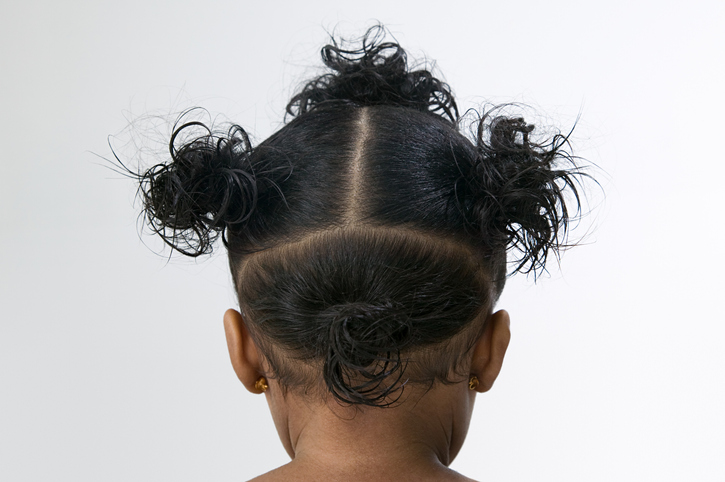
Source: Image Source / Getty
Let’s talk about baby hair. No, not the hairs you try to comb into something extravagant at the front of your head, but the actual hair of infants. I’m sure we all have encountered an adorable baby who has that bald patch on the back of their head. Or maybe you’ve seen one who has it on the side. For my own child, I noticed that after being born with a tremendous head of hair, the front of my son’s hairline started to thin out (almost like mine did after I gave birth). When I did research online, I ran across terms like alopecia areata and immediately freaked out, or telogen effluvium and immediately found myself confused. So what is the deal with baby hair loss, and does the hair grow back? I sought out Hair Hacks expert and dermatologist Dr. Yolanda Lenzy, who helped me breathe a sigh of relief about it all.
“A lot of kids can go through hair loss,” she says. “We see it in two types of ways: One, we see it in the back, which is usually from friction from the baby lying on their back sometimes. But then we can also see it’s the same type of phenomenon with how we see neonatal acne. The baby’s hormone levels that they were exposed to in utero change after they’re born.”
So as I mentioned, just as I lost hair that was thriving at an accelerated rate once my pregnancy was over and I ended my usage of prenatal vitamins, the hormones our children are exposed to in the womb are obviously not something they’re still exposed to once they’re in the world. Cue to some hair loss.
“They can go through a bit of hair shedding, so we can see that sometimes and it will recover as they become toddlers,” Dr. Lenzy reassures. “We can kind of see certain skin and hair, types of shedding in babies, which is really the result of their changing environment, from being in utero and exposed to the mother’s hormones to once they’re born. That’s the best way we understand it.”
A similar example of this, as Dr. Lenzy mentioned, is the way newborns can end up with baby acne. The maternal hormones in their system in the weeks after they’re born are still quite strong, so that can lead to pimples on their tiny faces (or other parts of the body). An increase in hormones leads to acne, but as the hormones wane, so does the acne. An increase in hormones can lead to full, striking baby hair, but as it wanes, you may notice the bald patches and shedding.
For those who want to curb any further hair loss, especially the pesky back-of-the-head kind, Dr. Lenzy recommends products like silk and satin sheets. There are also many sellers of baby bonnets and yes, baby durags, online these days. (I have two!)









